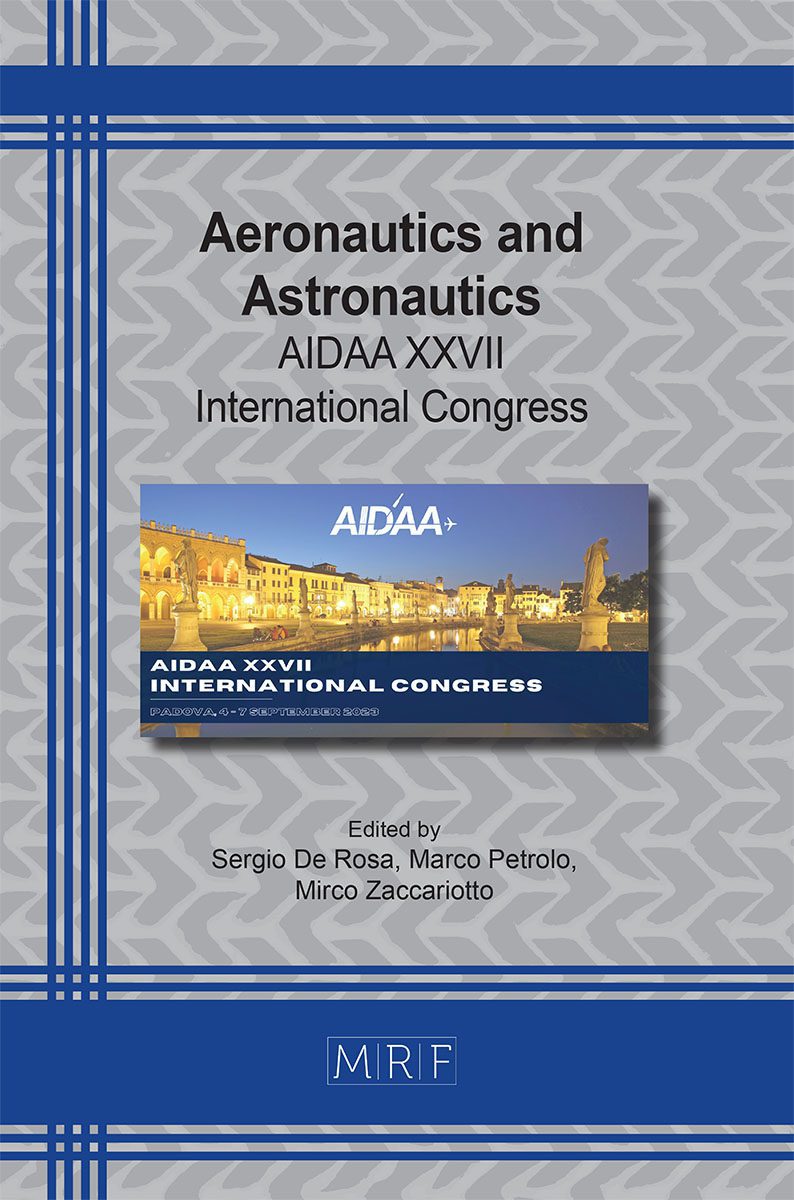Numerical and experimental studies on BLI propulsor architectures
A. Battiston, A. Magrini, R. Ponza, E. Benini, J. Alderman
download PDFAbstract. An increasing awareness about the impact of civil air transportation emissions is currently driving a low-carbon technology transition, towards more sustainable propulsion strategies. Boundary layer ingesting systems are one of the most promising solutions, as a closer integration between fuselage and propulsors is considered a key in the achievement of more sustainable architectures. Such architecture is characterized by a high level of integration between the airframe and propulsors, making the design process become a major challenge. The present work deals with a complete CFD based design and optimization of a propulsive fuselage concept, both in terms of airframe shape and fan design.
Keywords
Boundary Layer Ingestion, Jet Propulsion, Aerodynamics, Optimization, Computational Fluid Dynamics
Published online 11/1/2023, 4 pages
Copyright © 2023 by the author(s)
Published under license by Materials Research Forum LLC., Millersville PA, USA
Citation: A. Battiston, A. Magrini, R. Ponza, E. Benini, J. Alderman, Numerical and experimental studies on BLI propulsor architectures, Materials Research Proceedings, Vol. 37, pp 61-64, 2023
DOI: https://doi.org/10.21741/9781644902813-14
The article was published as article 14 of the book Aeronautics and Astronautics
![]() Content from this work may be used under the terms of the Creative Commons Attribution 3.0 license. Any further distribution of this work must maintain attribution to the author(s) and the title of the work, journal citation and DOI.
Content from this work may be used under the terms of the Creative Commons Attribution 3.0 license. Any further distribution of this work must maintain attribution to the author(s) and the title of the work, journal citation and DOI.
References
[1] Lee, D., Fahey, D., Skowron, A., Allen, M., Burkhardt, U., Chen, Q., Doherty, S., Freeman, S., Forster, P., Fuglestvedt, J., Gettelman, A., De León, R., Lim, L., Lund, M., Millar, R., Owen, B., Penner, J., Pitari, G., Prather, M., Sausen, R., and Wilcox, L., “The contribution of global aviation to anthropogenic climate forcing for 2000 to 2018,” Atmospheric Environment, Vol. 244, 2021, p. 117834. https://doi.org/https://doi.org/10.1016/j.atmosenv.2020.117834
[2] Toffolo, A., and Benini, E., “Genetic Diversity as an Objective in Multi-Objective Evolutionary Algorithms,” Evol. Comput., Vol. 11, No. 2, 2003, p. 151–167. https://doi.org/10.1162/106365603766646816
[3] Ronco, C., and Benini, E., “GeDEA-II: A Simplex Crossover Based Evolutionary Algorithm Including the Genetic Diversity as Objective,” Applied Soft Computing, Vol. 13, 2013, pp. 2104–2123. https://doi.org/10.1016/j.asoc.2012.11.003.
[4] Toffolo, A., and Benini, E., “A new pareto-like evaluation method for finding multiple global optima in evolutionary algorithms,” Late Breaking Papers at the 2000 Genetic and Evolutionary Computation Conference, 2000, pp. 405–410.
[5] Comis Da Ronco, C., Ponza, R., and Benini, E., “Aerodynamic shape optimization of aircraft components using an advanced multi-objective evolutionary approach,” Computer Methods in Applied Mechanics and Engineering, Vol. 285, 2015, pp. 255–290. https://doi.org/https://doi.org/10.1016/j.cma.2014.10.024.
[6] Benini, E., Ronco, C., and Ponza, R., “Aerodynamic Shape Optimization in Aeronautics: A Fast and Effective Multi-Objective Approach,” Archives of Computational Methods in Engineering, Vol. 21, 2014, pp. 189–271. https://doi.org/10.1007/s11831-014-9123-y.
[7] Massaro, A., and Benini, E., “A Surrogate-Assisted Evolutionary Algorithm Based on the Genetic Diversity Objective,” Applied Soft Computing, Vol. 36, 2015, pp. 87–100. https://doi.org/10.1016/j.asoc.2015.06.026.
[8] Benini, E., Venturelli, G., and Łaniewski, W., “Comparison between pure and surrogate assisted evolutionary algorithms for multiobjective optimization,” Front. Artif. Intell. Appl, Vol. 281, 2016, pp. 229–242.































